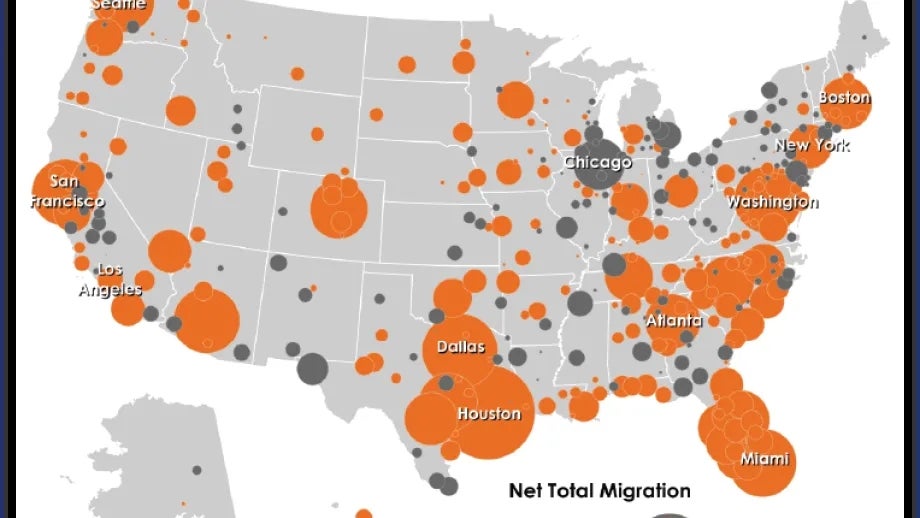
Each month a new map is presented to the Commission to help explain important trends in the Bay Area, across the nation and around the world. These custom-crafted maps are prepared by MTC’s Data & Visualization team.
Each month a new map is presented to the Commission to help explain important trends in the Bay Area, across the nation and around the world. These custom-crafted maps are prepared by MTC’s Data & Visualization team.

According to figures recently released by the U.S. Census, America’s largest metro areas are currently gaining population at impressive rates. The growth in these areas is in fact driving much of the population growth across the nation. Upon closer examination of the data, this growth is the result of two very different migrations – one coming from the location choices of Americans themselves, the other shaped by where new immigrants from outside the United States are heading.
While many metro areas are attracting a net-inflow of migrants from other parts of the country, in several of the largest metros – New York, L.A., and Miami, especially – there is actually a net outflow of Americans to the rest of the country. Immigration is driving population growth in these places. Sunbelt metros like Houston, Dallas, and Phoenix, and knowledge hubs like Austin, Seattle, San Francisco, and D.C. are gaining much more from domestic migration.
This map charts overall or net migration – a combination of domestic and international migration. Most large metros, those with at least a million residents, had more people coming in than leaving. The metros with the highest levels of population growth due to migration are a mix of knowledge-based economies and Sunbelt metros, including Houston, Dallas, Miami, D.C., San Francisco, Seattle, and Austin. Eleven large metros, nearly all in or near the Rustbelt, had a net outflow of migrants, including Chicago, Detroit, Memphis, Philadelphia, and St. Louis.
From Atlantic Cities